A Walk in the Rice Fields
When she was a little girl, Su’s father built her a little tower on stilts in the rice paddies. Not to play houses — unusually for a Balinese woman in her 40s, Su’s still awaiting Mister Right — craft offerings from flowers, or necklaces from cassava leaves and stems. Though she’ll show Z how to do that as we walk the fields.
Just to watch the birds she loved. And still loves today.
“I don’t worry too much about men,” she says. “I have nieces. I take them shopping. I don’t buy them too many things, you understand. Not too much. My last relationship? Thirteen years ago. Too much hard work…”
We’ve walked with Su, Z, Brooks, Stu and I, through the fields close to Campuhan Bridge, in the west of Ubud, a place where the town performs one of its perplexing jump-shifts from traffic-clogged tourist mecca to rural tranquillity.
A main road choked with scooters and people carriers, restaurant signage almost obscuring the temples, touts offering “transport” side by side with men in checkered sarongs and neat head-dresses progressing to ceremonies, heads down into a green and tranquil landscape that seems unchanged for centuries.
It’s birds that are Su’s thing, though. For the last 17 years or so she’s worked with Victor Mason, a Brit whose stellar eccentricities made him a legend even by the rarefied standards of early Bali expats, guiding folk through the countryside on the Bali Bird Walk.
She knows researchers and ornithologists all over the Indonesian archipelago. Her rapier vision spots everything from spiders to swiftlets, egrets, eagles…
We’ve seen seven or eight different species, clustered in palm trees, frangipani, on power cables, before we even leave main street. Not to mention this charming lady spider, awaiting coitus with her minuscule mate, after which, his biological destiny fulfilled, he becomes dinner.
We wind up a steep paved road, which turns into one of those narrow paths which function, for Balinese scooter drivers, as super-highways across the flooded landscape. Su exclaims and we fumble with binoculars.
A Javanese kingfisher, his breast a flash of Technicolor blues, squats on a post in the rice paddy, waiting for frogs and eels, making a mockery of the unfurled plastic bags that flutter like prayer flags on the bamboo poles in lieu of scarecrows.
Javan pond herons strut pompously behind a man turning the clay soil by hand, sulphurous heads pecking for worms, eels and leeches. There are more birds now than when Su was a child, she explains, because fewer people hunt them.
Dragonflies whirl over one of the rushing channels that line the way. A bird of prey hovers malevolently over fluttering swiftlets. An elderly lady bathes, bare-breasted and unselfconscious, in the turbid water that rushes down from the heights.
Z stops to watch a man opening up a channel from the ditch that runs by the path into his family field. “Who builds these channels?” I ask. For all its serene beauty, this intensively farmed landscape is one of the most engineered agricultural environments on earth.
“It’s the rice farmers association,” Su explains. “Since the 1600s, each village has their rice farmers’ association. Everyone in the association votes for people who manage the water. And we always, always vote for the people who have the fields at the bottom. Maybe if someone is not a good person, we’ll vote for their neighbour. But we vote for the people who have the lowest fields because they will make sure that all the fields get water.”
The rice farmers associations each have their own temple – and meeting places, within the fields. We stop at one, complete with a map, that divides up the land into a patchwork of tiny strips, each stepped at back-breaking effort slightly above or below its neighbour.
“The rice farmers association decides when people must sow rice,” Su explains. “Each family has to farm their fields, or they will be fined. And they cannot sell their land, unless they need the money to save a life. The land belongs to our ancestors. And if we build on it, the ancestors will be angry.”
Rice farming requires immense cooperation between neighbours. There’s only a low mud wall between adjoining paddy fields, which is opened or closed with a mattock to control the levels of water in the fields.
At some stages of its growth cycle, rice needs ample water. At other times, the young shoots thrive in simple sticky clay. Releasing water from your own field could wash your neighbour’s work away.
Even today, the farmers team together to excavate tunnels and channels to carry the water that floods from the heavens. I wonder how many of the streams that run in deep ravines through the landscape began at the level they occupy now and how many are the product of centuries of managed evolution, as old as ancient hedgerows.
Because for all Ubud’s status as a mecca for visitors, the traditions and rituals of local life hold very, very strong. Not just because children still trap dragonflies for fun or suck the delicious nectar of the sleeping hibiscus flower.
For every Western Eat Pray Lover practising yoga, seeking out Buddhism or finding traditional healers, there is a Balinese village still governed by ancient rituals, worship of gods and appeasement of demons and ancestors, where teeth are ritually filed as you come of age and children are named according to the order in which they were born.
How traditional is society?
“There are three different Balinese languages,” Su (Wayan “Firstborn” Sumadi, in full) explains. “The low caste language, the medium language, and the high language. Because I am sudra, the lowest caste, I don’t speak the other languages too well. If I go to the Palace, I have to apologise for not speaking their language.”
Movement between Bali’s three castes is easier than it was, Su explains. “It is easier to become a Brahman now. You can do it by getting rich. But still, if I am sudra and married to a high-caste man, and I am pregnant, I cannot eat the offerings from my temple.”
By a statue of Siwa, skulls crushed below his feet, aged to agelessness by the moss that grows so fast here, Su tells us a complicated tale of black magic, death and resurrection. At Murni’s Warung she enthuses about the health-giving qualities of unhusked “red” rice.
And, as we return home, a turmeric shoot which Su has dug for us tucked for safe-keeping in a water bottle, edible leaves and medicinal herbs bulging from Z’s pockets, I’m amazed once again at her knowledge of her country.
The Bali Bird Walk runs on Tuesdays, Fridays, Saturdays and Sundays, or other days by arrangement.

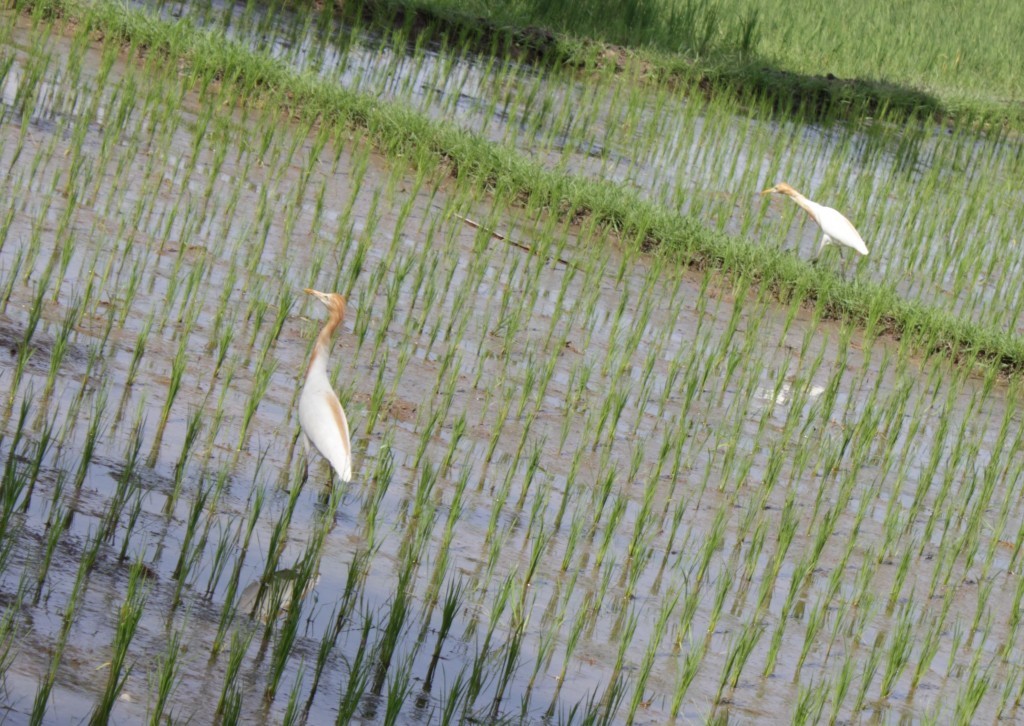
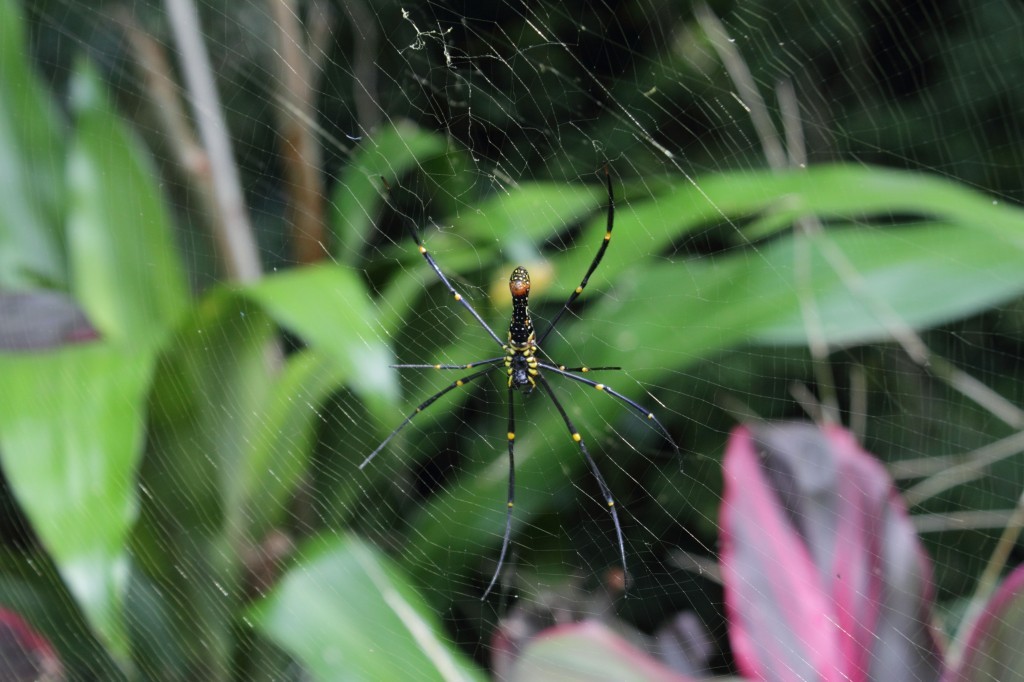
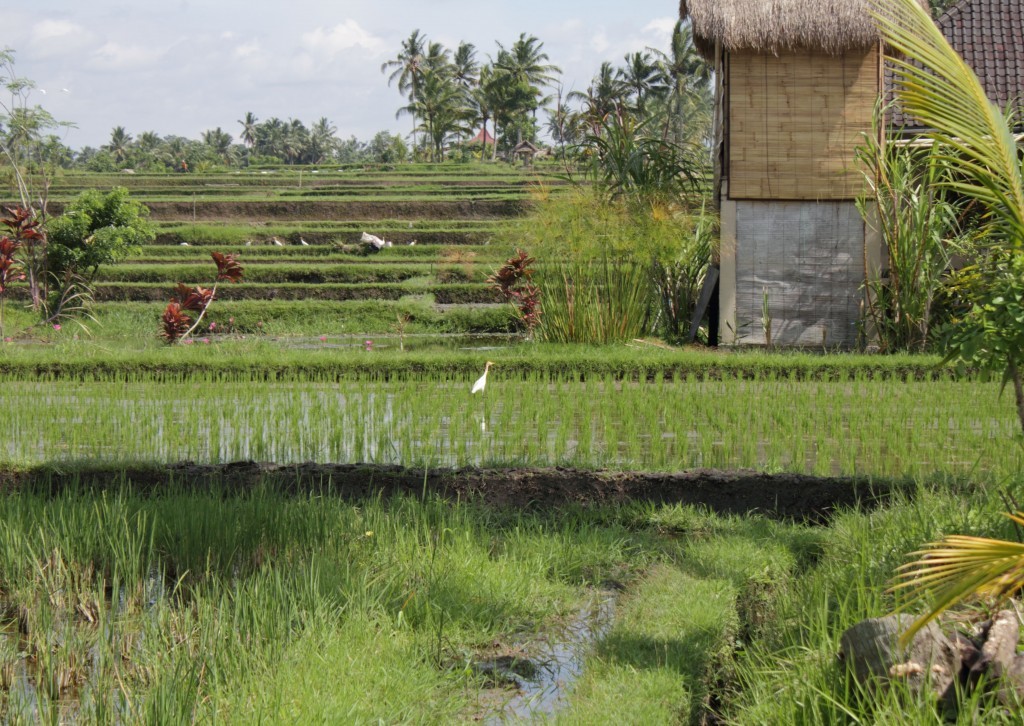
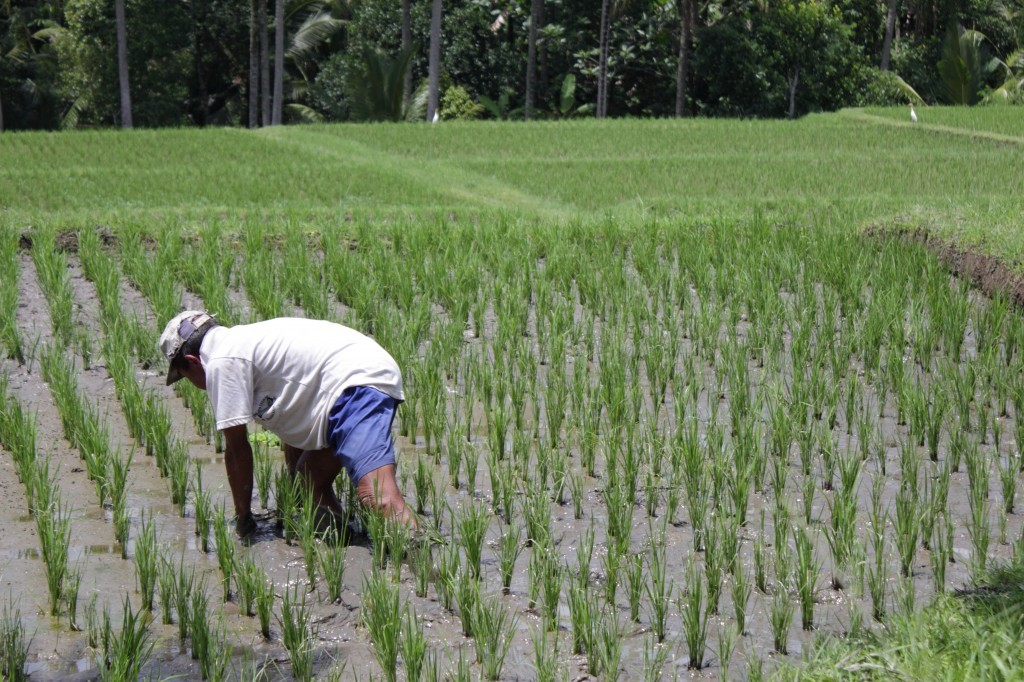
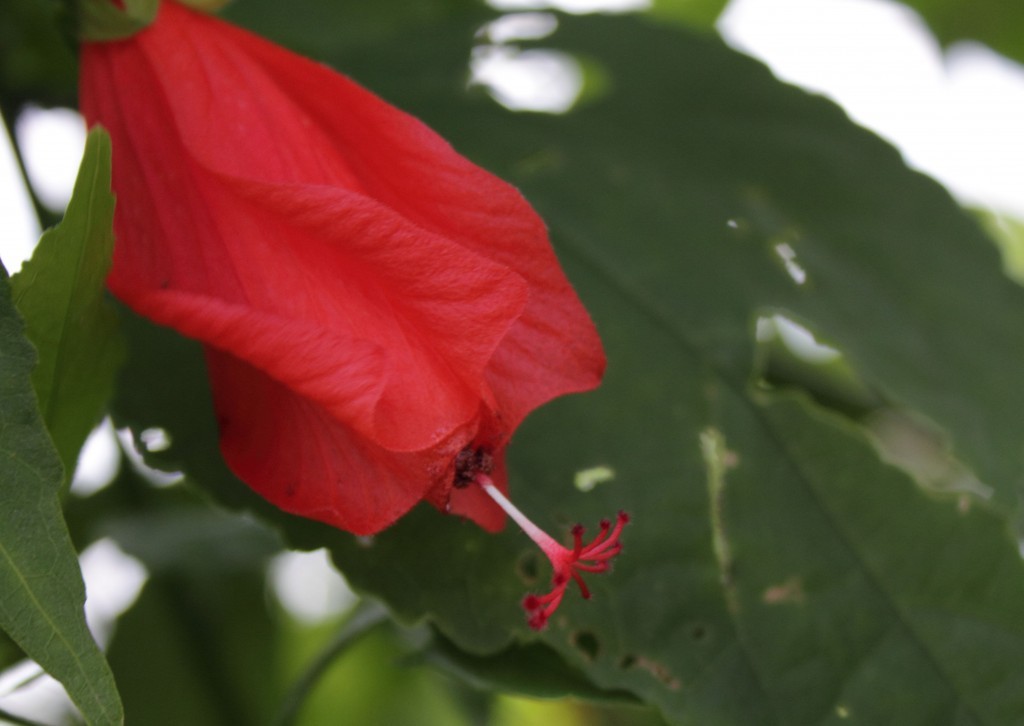
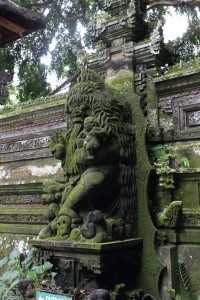
Thanks for taking us along on your walk! It sounds peaceful & I like Su very much.
Aw, thank you!
amazing – i love all the people that you’re meeting, and sharing with us. those photos – and stories – are incredible. what will you do with the turmeric shoot? i’ve only had it dried!
We’ve planted it in the garden! You can buy fresh roots in the market place — looks like ginger root, only yellow — but they also eat the leaves here, which are hard to buy, so hopefully we’ll get some leaves from it. We’ve put it next to a pineapple top and will see what transpires…
So pretty! I have two friends who just left San Francisco to work at an organic farm in Ubud for a stint, and I’m dying to get over there myself after hearing what a blast they’ve been having.
Is that the Sari Organic farm? That looks lovely… And you totally should. We’ve been exploring the island quite a bit and the contrasts between the centre, the beaches, Ubud is phenomenal…
So nice to hear your impressions, the bird walk was after my time but the Balinese are amazing in their ability to absorb tourists and yet maintain their own integrity. The Balinese language is more complicated than Japanese, one of the reasons I never learned it! Have you made it to Cinta yet?
I went down yesterday, en route to a cremation. I asked the young guy who was laying out the offerings whether he was there when he built, and mentioned your name. He looked at me as if I was mad and said, “That was 1989…” 😉 They have some lovely books there, though, and it’s still going strong…
LOL! Ancient history indeed! You need to ask for Nyoman Mastra – he is still in charge and can rustle up anything and anyone in a heartbeat. You have got me seriously considering moving over from the Malaysian side of Borneo to the Indonesian side and just following your path (instead of going from Sabah to India which is what I thought I wanted to do!)
Indonesia is a dangerous place to go! You get stuck, seriously… But I think in terms of unexplored frontiers, it has so much to offer. Can’t wait to see what you decide…
I read various posts of yours out of curiosity nearly a year ago, and then began from the beginning to follow your inspiring journey. As a single mother, avid reader and aspiring traveler- I have seriously enjoyed your tales.(you are hilarious & witty & much more daring than I) I like the look of this new layout tremendously- but it seems to have lost the ability to travel from post to post chronologically. Am I totally missing where the “next” button moved or did it disappear completely? I was so sad to discover I may not be able to keep reading the way I have been!
Thank you for your comment – feedback on things like layout is REALLY helpful, and I wish more people did it. The next-last post button HAS gone – I’ve put the archives back in the sidebar, though (when you’re reading a post), so hopefully that helps?! Let me know how you get on….